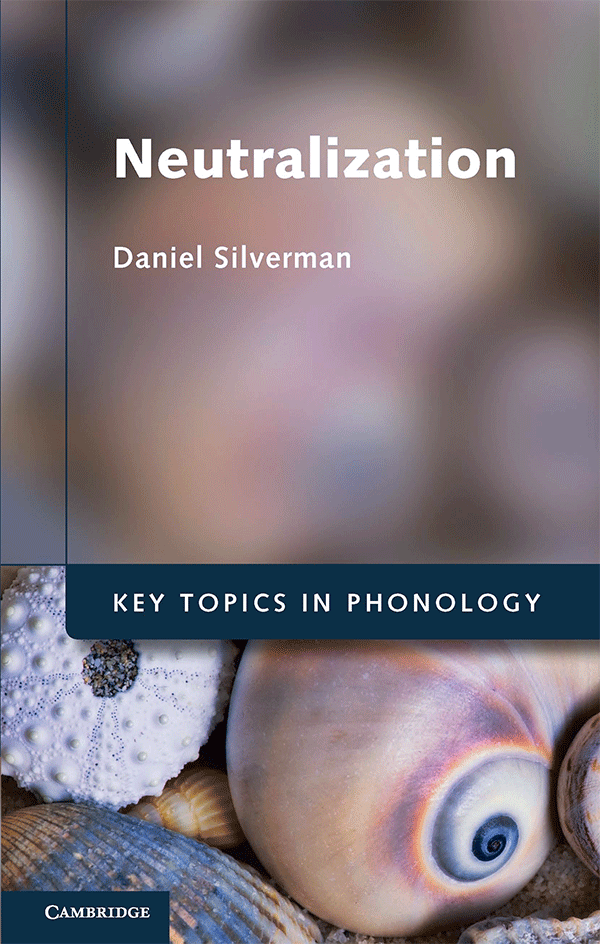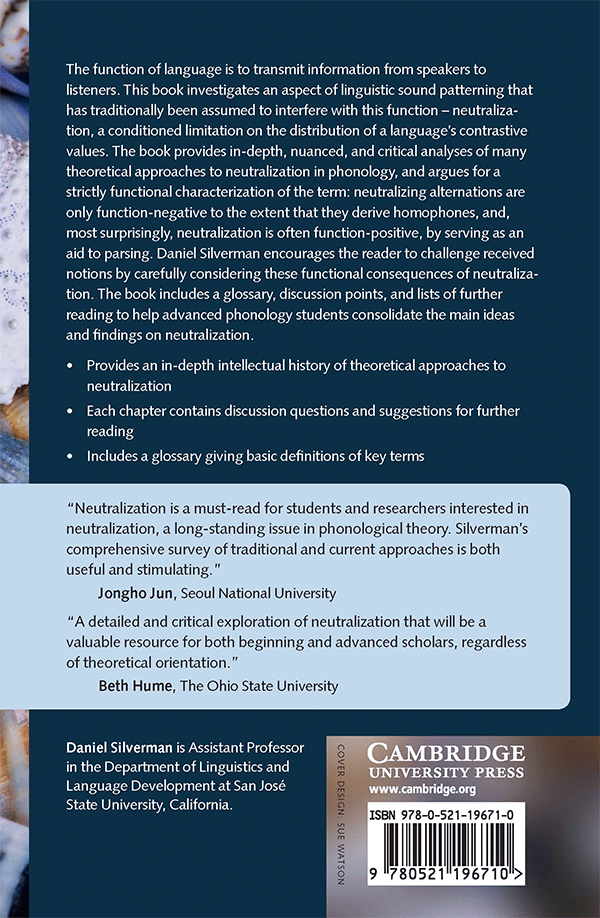| Silverman, Daniel. 2012. Neutralization (Rhyme And Reason In Phonology). Cambridge University Press. |
“Overarch” “Neutralization” is a conditioned limitation on the distribution of a language’s contrastive values. The theses explored herein:
In all, it is proposed that neutralization may proceed largely unchecked (thus increasing what I term phonological RHYME), until encountering a passive, usage-based pressure inhibiting excessive derived homophony (that is, until phonological REASON would be breached). “Undergird” The book considers neutralization from many different theoretical vantage points and schools of linguistic thought, from Kazan, to Prague, to London, to Boston, to Los Angeles, and beyond. The book is divided into two parts. For the bulk of the book—RHYME—I observe, describe, and explain neutralization from many different theoretical perspectives, all the while building towards a discussion of neutralization’s minor function-negative role. The shorter second part—REASON—also surveys approaches to neutralization, but from a very different perspective, emphasizing its major function-positive role. Throughout, special emphasis is placed on theoretical approaches that do not typically get thorough airings in today’s classrooms. My reasons for this special emphasis are at least threefold:
“Brick and Mortar” This is not a book for beginners. It assumes fairly extensive exposure to phonological theory, and it challenges readers to consider unfamiliar ways—both old and new—of analyzing phonological data. I don’t hold back from presenting the “new”; less advanced readers may prefer to skip the preamble until having gotten further into the book. Regarding the discussion questions at the end of each chapter, loosely, these come in three varieties:
There is certainly overlap among these three categories. The IPA (International Phonetic Alphabet) is used throughout, and always appears in bold. It is used for phonetic transcriptions, and for representing normative, typical, or (perhaps) idealized pronunciations. Neither square brackets nor virgules are ever used. For corrections, updates, info on buying book rights for the inevitable Hollywood blockbuster (Steve baby? Marty my man?), and any other news related to the form or content of this book, please visit my website (www.seedyroad.com). You can also email me from there.
|
| ERRATA: Silverman, Daniel. 2012. Neutralization (Rhyme And Reason In Phonology). Cambridge University Press. | |
| Front Matter | |
| Chapter One | |
| Chapter Nineteen |


















